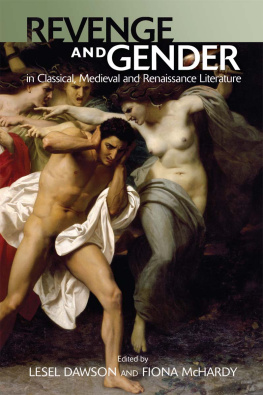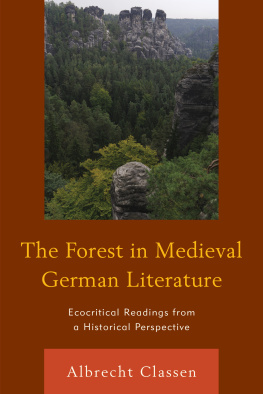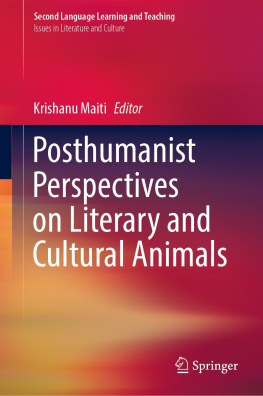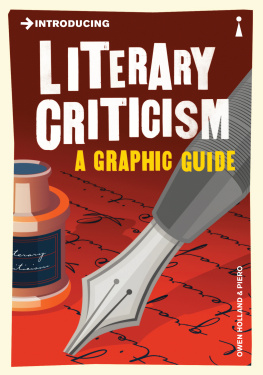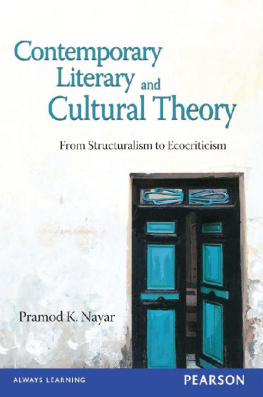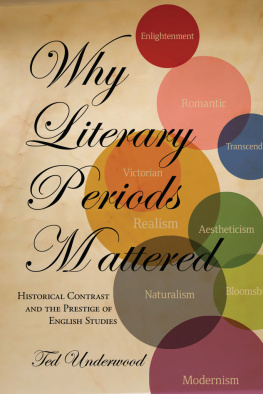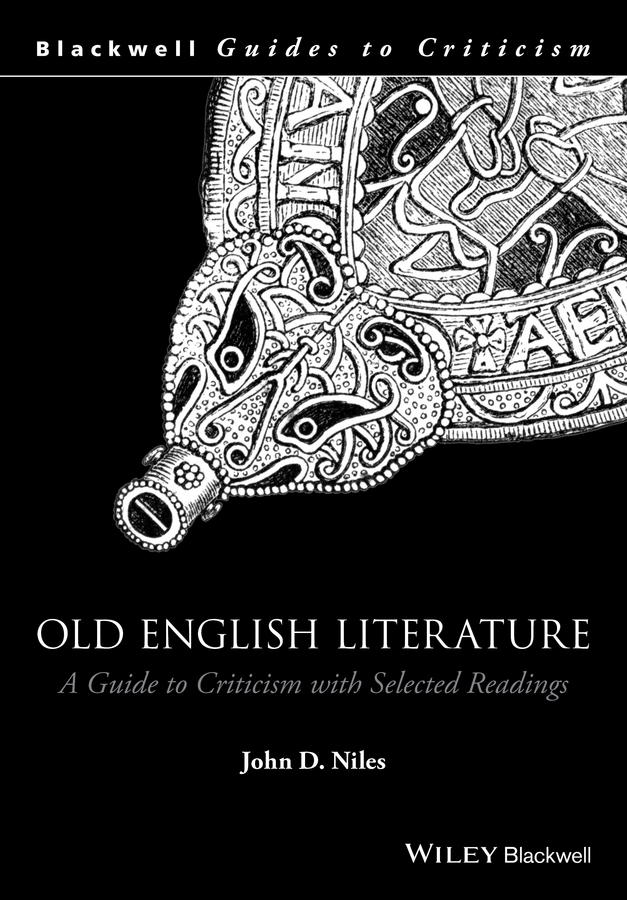
Table of Contents
Guide
Pages
Blackwell Guides to Criticism
Editor Michael ONeill
Blackwells Guides to Criticism series offers students privileged access to and careful guidance through those writings that have most conditioned the historic current of discussion and debate as it now informs contemporary scholarship.
Early historic responses are represented by appropriate excerpts and described in an introductory narrative chapter. Thereafter, materials are represented thematically in extracts from important books or journal articles according to their continuing critical value and relevance in the classroom. Critical approaches are treated as tools to advance the pursuit of reading and study and each volume seeks to enhance the enjoyment of literature and to widen the readers critical repertoire.
Published volumes
| John D. Niles | Old English Literature |
| Roger Dalrymple | Middle English Literature |
| Corinne Saunders | Chaucer |
| Emma Smith | Shakespeares Comedies |
| Emma Smith | Shakespeares Histories |
| Emma Smith | Shakespeares Tragedies |
| Uttara Natarajan | The Romantic Poets |
| Francis OGorman | The Victorian Novel |
| Michael Whitworth | Modernism |
| Michael ONeill & | Twentieth-century British and Irish Poetry |
| Madeleine F. Callaghan |
Old English Literature
A Guide to Criticism with Selected Readings
John D. Niles
This edition first published 2016
2016 John D. Niles
Registered Office
John Wiley & Sons, Ltd, The Atrium, Southern Gate, Chichester, West Sussex, PO19 8SQ, UK
Editorial Offices
350 Main Street, Malden, MA 02148-5020, USA
9600 Garsington Road, Oxford, OX4 2DQ, UK
The Atrium, Southern Gate, Chichester, West Sussex, PO19 8SQ, UK
For details of our global editorial offices, for customer services, and for information about how to apply for permission to reuse the copyright material in this book please see our website at www.wiley.com/wiley-blackwell.
The right of John D. Niles to be identified as the author of this work has been asserted in accordance with the UK Copyright, Designs and Patents Act 1988.
All rights reserved. No part of this publication may be reproduced, stored in a retrieval system, or transmitted, in any form or by any means, electronic, mechanical, photocopying, recording or otherwise, except as permitted by the UK Copyright, Designs and Patents Act 1988, without the prior permission of the publisher.
Wiley also publishes its books in a variety of electronic formats. Some content that appears in print may not be available in electronic books.
Designations used by companies to distinguish their products are often claimed as trademarks. All brand names and product names used in this book are trade names, service marks, trademarks or registered trademarks of their respective owners. The publisher is not associated with any product or vendor mentioned in this book.
Limit of Liability/Disclaimer of Warranty: While the publisher and author have used their best efforts in preparing this book, they make no representations or warranties with respect to the accuracy or completeness of the contents of this book and specifically disclaim any implied warranties of merchantability or fitness for a particular purpose. It is sold on the understanding that the publisher is not engaged in rendering professional services and neither the publisher nor the author shall be liable for damages arising herefrom. If professional advice or other expert assistance is required, the services of a competent professional should be sought.
Library of Congress Cataloging-in-Publication Data
Names: Niles, John D., author. | Niles, John D.
Title: Old English literature : a guide to criticism with selected readings / John D. Niles.
Description: 1 | West Sussex ; Malden, MA : Wiley-Blackwell, 2016. | Series: Blackwell guides to criticism | Includes bibliographical references and index.
Identifiers: LCCN 2015040684 (print) | LCCN 2015051344 (ebook) | ISBN 9780631220565 (hardback) | ISBN 9780631220572 (paper) | ISBN 9781118598832 (pdf) | ISBN 9781118598849 (epub)
Subjects: LCSH: English literatureOld English, ca. 450-1100History and criticismTheory, etc. | CriticismHistory20th century. | BISAC: LITERARY CRITICISM / European / English, Irish, Scottish, Welsh.
Classification: LCC PR173 .N65 2016 (print) | LCC PR173 (ebook) | DDC 829/.09dc23
LC record available at http://lccn.loc.gov/2015040684
A catalogue record for this book is available from the British Library.
Cover image: Black and white of Alfreds Jewel, 9th Century Liszt Collection/Alamy
Preface and Acknowledgements
In a broad sense of the term, the criticism of Old English literature (from Greek kritik the critical art) began when certain pioneering English scholars of the sixteenth century published the first printed editions of works dating from the Anglo-Saxon period, accompanying those editions with remarks of their own so as to facilitate the readers understanding. If those scholars gave a spin to the texts they edited, something similar can be said of the transmission of knowledge in general since the beginnings of time.
In the more narrow sense in which the term is used today, the criticism of Old English literature can be said to have begun in the first half of the nineteenth century, when men of letters including the English scholar William Conybeare, the Danish poet, scholar, and clergyman N.F.S. Grundtvig, and the American poet Henry Wadsworth Longfellow wrote appreciative commentaries on Old English poetic texts, calling attention to the aesthetic merits of those texts or, at times, noting what they believed to be their formal or stylistic defects. These writers, together with others of this general period, also translated Old English poems or passages into one or another of the modern languages, another form of homage and critique.
Not until the mid-twentieth century did the criticism of Old English literature come into its own. What is perhaps most striking about the criticism that had been undertaken up to that time is its invisibility, when compared with the criticism of literature of more recent date. When Ren Wellek brought out his multi-volume History of Modern Criticism in the years 19551992, for example, the fifth and sixth volumes of that work, published in 1986 and titled respectively English Criticism 19001950 and American Criticism 19001950, included not a single notice of the criticism of Old English literature. It is as if this literature did not exist as a subject of critical inquiry. Perhaps this conspicuous blank in what is otherwise a commendable set of volumes resulted from spot-blindness on the part of its author, who could not be expected to have covered all topics; but perhaps it also tells us something about the place of Old English in the field of literary studies up to the mid-twentieth century.
This place was clearly a marginal one. While study of the Old English language had long been valued as a branch of philology and historical linguistics, and while Anglo-Saxon historical studies were being pursued with vigour (particularly in the United Kingdom), the criticism of Old English literature tended to be viewed as something like a contradiction in terms. The great tradition of English literature was widely and, in a sense, correctly thought to have begun with Chaucer, Malory, and other writers of the late medieval era, not with the Anglo-Saxons, for the relation of Old English literature to the poetry and prose of later periods was hard to discern. Twentieth-century literary critics therefore tended to direct their gaze to the period extending from Chaucer onwards while leaving Anglo-Saxon studies to the philologists and historians.
Next page

